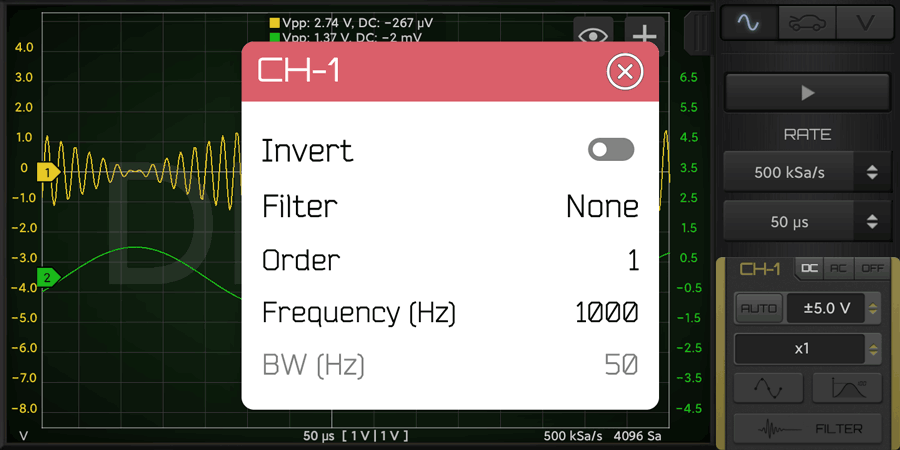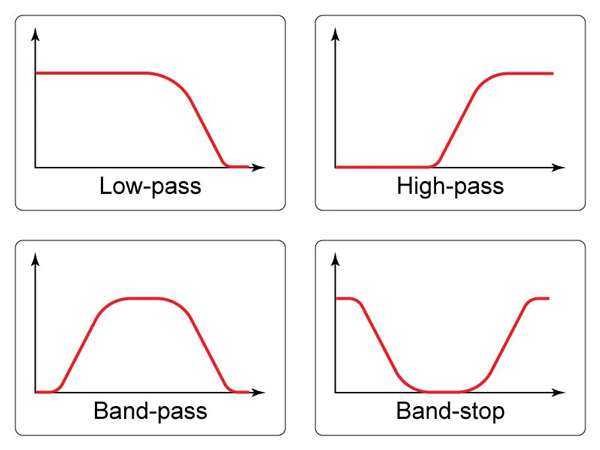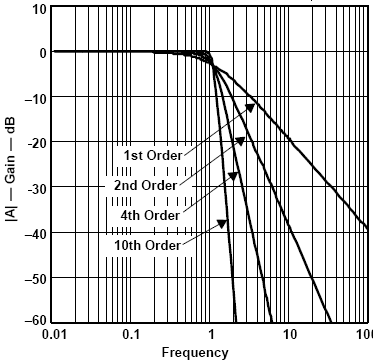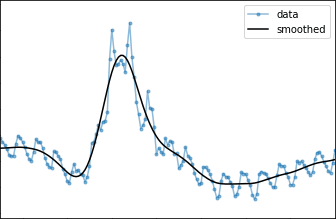
Filters
You can apply filters to each channel (button FILTER). Filtering operation may change the original signal in reversible or irreversible way. Irreversible filtering means that the operation modify the original signal in a way that later the original signal cannot be restored.

| Type of Filtering | Description | Reversible |
| Invert (inversion) | It invert the input signal (the signal will be mirrored respect the 0 level) | Yes |
| Low Pass | The frequencies over the defined frequency will be attenuated. | No* |
| High Pass | The frequencies below the defined frequency will be attenuated. | No* |
* In Automotive Module the filtering can be reversible until the waveform is not saved. After saving the filtered data will be saved and there is no way to reverse to the original waveform or change the filtering parameters.
Filters Response in Frequency

You can set the cutoff frequency of the filter. In case of low-pass and high-pass filter you just set the one frequency, while in case of band-pass and band-stop filters you must set 2 frequecies, one of start and one of end. At the cutoff frequency the signal is attenuated of 70.7% of its amplitude and keep to be attenuated more an more according the graph above.
For example if you set a low-pass filter at 100Hz it means that you will see all the components of the signal up to around 100Hz. After 100Hz they will be progressively attenuated.
The inclination of the attenuation curve depends from the filter order. Higher is the order and more rapids is the curve.

A typical usage of a low-pass filter is to filter out the noise from the signal of interest, a way to “clean” the waveform. Here an example of signal cleaning with a low-pass filter:
